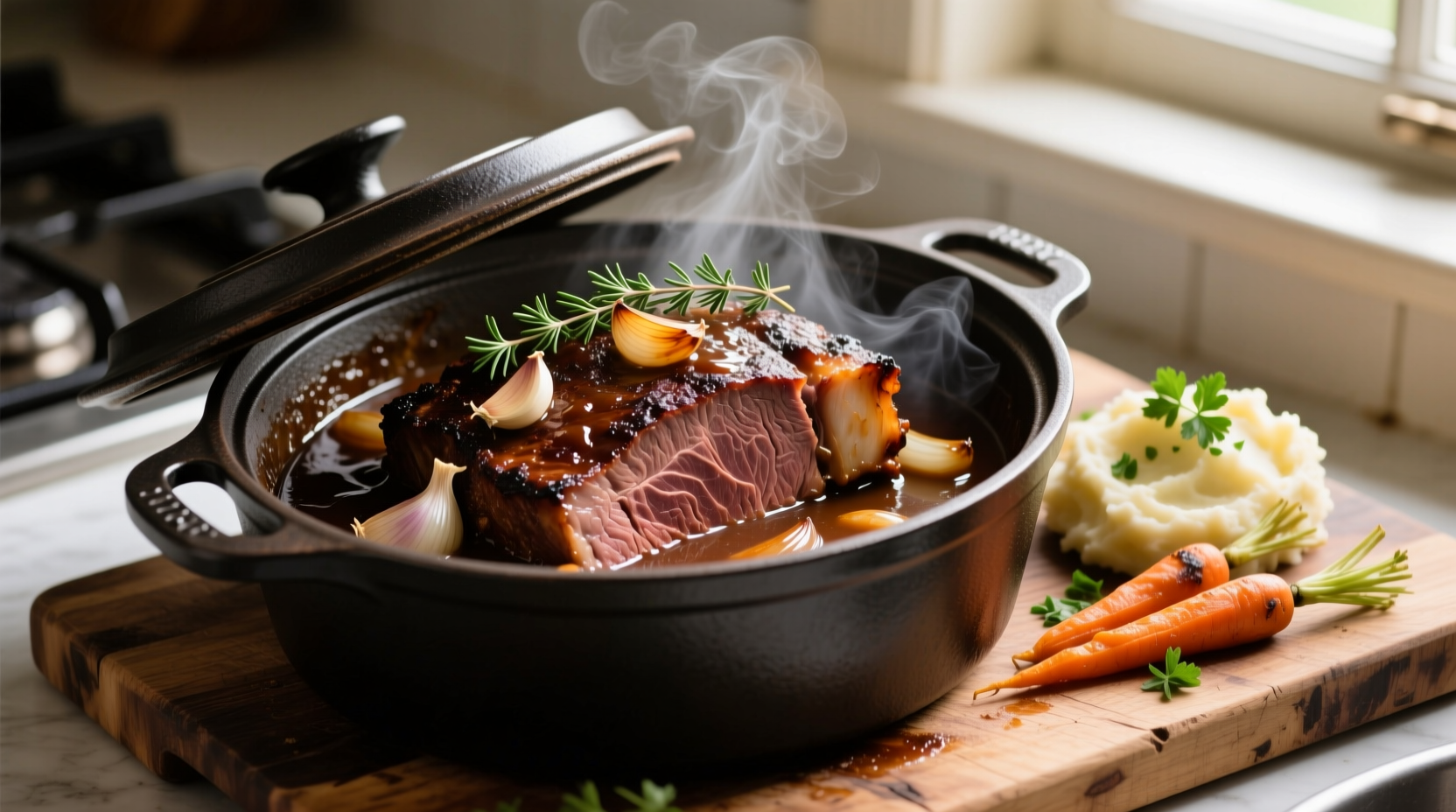Why Chuck Roast Needs Special Cooking Techniques
Chuck roast comes from the shoulder area of the cow, making it rich in connective tissue and marbling. According to USDA Food Safety and Inspection Service guidelines, tougher cuts like chuck require longer cooking at lower temperatures to break down collagen into gelatin, transforming chewy meat into fork-tender perfection. This cut typically ranges from 2-4 pounds and serves 4-6 people when properly prepared.
Essential Preparation Steps for Success
Before you start cooking, proper preparation makes all the difference. Professional chefs universally agree that drying the surface thoroughly before seasoning creates the perfect sear. Pat your chuck roast with paper towels until no moisture remains, then generously season with kosher salt (about 1 teaspoon per pound) at least 45 minutes before cooking. This allows the salt to penetrate the meat rather than just sit on the surface.

Choosing Your Cooking Method: What Works Best
While chuck roast can be prepared in multiple ways, each method has specific advantages depending on your schedule and equipment. The American Institute of Culinary Education recommends oven roasting for best flavor development, but acknowledges slow cookers and pressure cookers as viable alternatives when time is limited.
| Cooking Method | Time Required | Temperature | Best For |
|---|---|---|---|
| Oven Roasting | 3-4 hours | 325°F | Maximum flavor development, crispy exterior |
| Slow Cooker | 8-10 hours | Low setting | Hands-off cooking, weeknight meals |
| Instant Pot | 90 minutes | High pressure | Quick preparation, same-day meals |
Step-by-Step Oven Method: The Gold Standard
For the most flavorful results, oven roasting remains the professional chef's preferred method. This technique allows for proper browning and controlled temperature management.
What You'll Need
- 3-4 pound chuck roast
- 2 tablespoons vegetable oil
- 1 large onion, chopped
- 4 garlic cloves, smashed
- 2 cups beef broth
- 2 sprigs fresh rosemary
- 3 sprigs fresh thyme
Execution Steps
- Preheat oven to 325°F and position rack in the center
- Pat roast dry and season generously with salt and freshly ground black pepper
- Heat oil in a Dutch oven over medium-high heat until shimmering
- Sear roast on all sides until deeply browned (about 4 minutes per side)
- Remove roast and sauté onions and garlic until softened
- Return roast to pot, add broth and herbs, cover tightly with lid
- Roast until fork-tender (approximately 20 minutes per pound)
- Check internal temperature—it should read 195-205°F
- Rest for 20 minutes before slicing against the grain
Troubleshooting Common Chuck Roast Problems
Even experienced cooks encounter issues with chuck roast. Understanding these context boundaries will help you avoid common pitfalls:
- Dry results: This usually happens when the roast hasn't cooked long enough for collagen to break down. The meat may seem done at 160°F, but needs to reach 195-205°F for proper tenderness.
- Lack of flavor: Insufficient seasoning or skipping the sear step prevents proper flavor development. Always season well in advance and create a good crust.
- Too much liquid: If using a Dutch oven, ensure the lid fits tightly to prevent excessive evaporation while still allowing some reduction.
Serving and Storage Recommendations
For optimal texture, always slice chuck roast against the grain—this shortens the muscle fibers, making each bite more tender. Leftovers store well in the refrigerator for 3-4 days or can be frozen for up to 3 months. When reheating, do so gently in the cooking liquid to maintain moisture. According to the National Cattlemen's Beef Association, reheating at too high a temperature causes the meat to become tough again.
Frequently Asked Questions
Should I trim the fat from chuck roast before cooking?
Leave most fat intact during cooking—it bastes the meat as it renders. Trim excess fat after cooking if desired. The fat cap helps keep the roast moist during the long cooking process.
Why is my chuck roast still tough after cooking?
Chuck roast needs to reach 195-205°F internally for collagen to fully break down. If still tough, return to heat and cook longer. The meat may appear done at lower temperatures but won't be tender until it reaches the proper internal temperature range.
Can I cook frozen chuck roast?
Thaw chuck roast completely before cooking for best results. Cooking from frozen prevents proper searing and leads to uneven cooking. Plan ahead and thaw in the refrigerator for 24-48 hours depending on size.
What vegetables pair best with chuck roast?
Root vegetables like carrots, potatoes, and parsnips work perfectly as they can withstand long cooking times. Add them during the last 1.5-2 hours of cooking so they don't become mushy while the roast finishes tenderizing.











 浙公网安备
33010002000092号
浙公网安备
33010002000092号 浙B2-20120091-4
浙B2-20120091-4